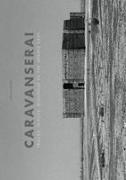- Start
- Caravanserai: Traces, Places, Dialogue in the Middle East
Caravanserai: Traces, Places, Dialogue in the Middle East
Angebote / Angebote:
A "caravanserai" is a roadside inn built to shelter men, goods and animals along ancient caravan routes in the Muslim world. For centuries they served as staging posts in the Middle East and Central Asia, providing accommodation to traders, pilgrims and other travellers along the famous caravan routes of the Silk Road that connected China, Central Asia and Europe overland. The caravanserais were vital nodes in what was in effect the first globalised overland network and trading system. It is estimated that some 12-15, 000 caravanserais have existed but today only some 3, 000 are identified or traceable. Those that have not vanished, or are not crumbling ruins, survive, in spite of the development of modern cities, as hotels, museums, shops, storage space, living quarters or garrison posts. After a first photographic report on caravanserais in north east Iran, Tom Schutyser chose the Levant region of Lebanon, Syria and Jordan as his next region for exploration. He not only shot ruined and restored caravanserais but the landscape and surroundings of these buildings, trying to capture the sense of history present in these places.
And by also engaging with experts, writers and journalists on the Middle East, the photographer presents the reader with a new dimension of the debate on the region as it is today. As a fundamental element in an early form of globalisation, the caravanserai is an example of a successful vehicle for multicultural dialogue.
Folgt in ca. 15 Arbeitstagen
